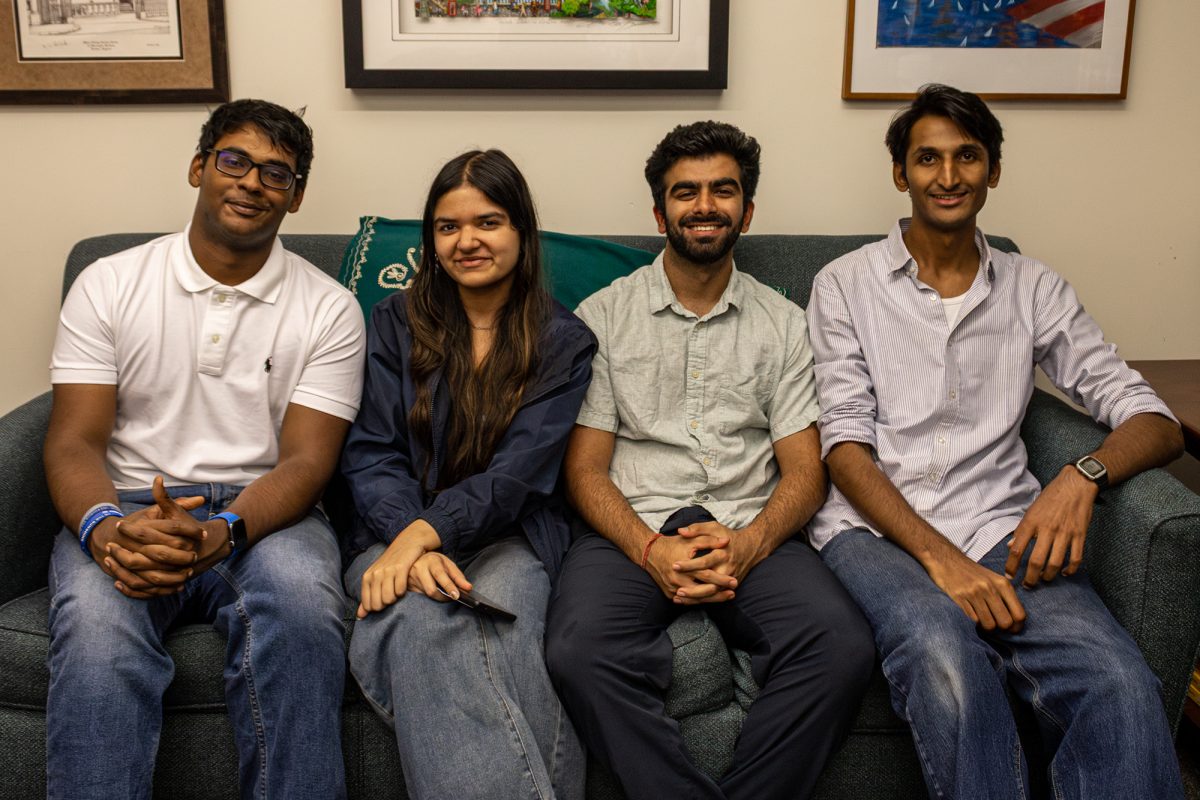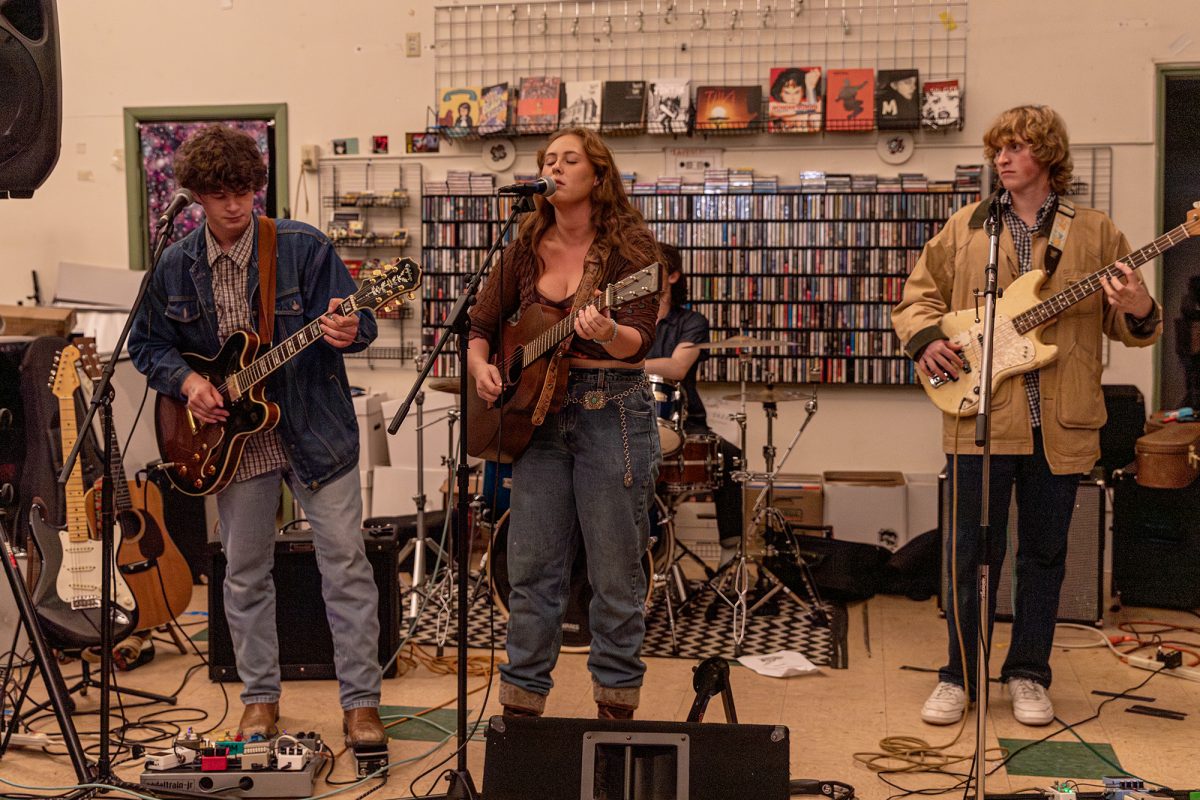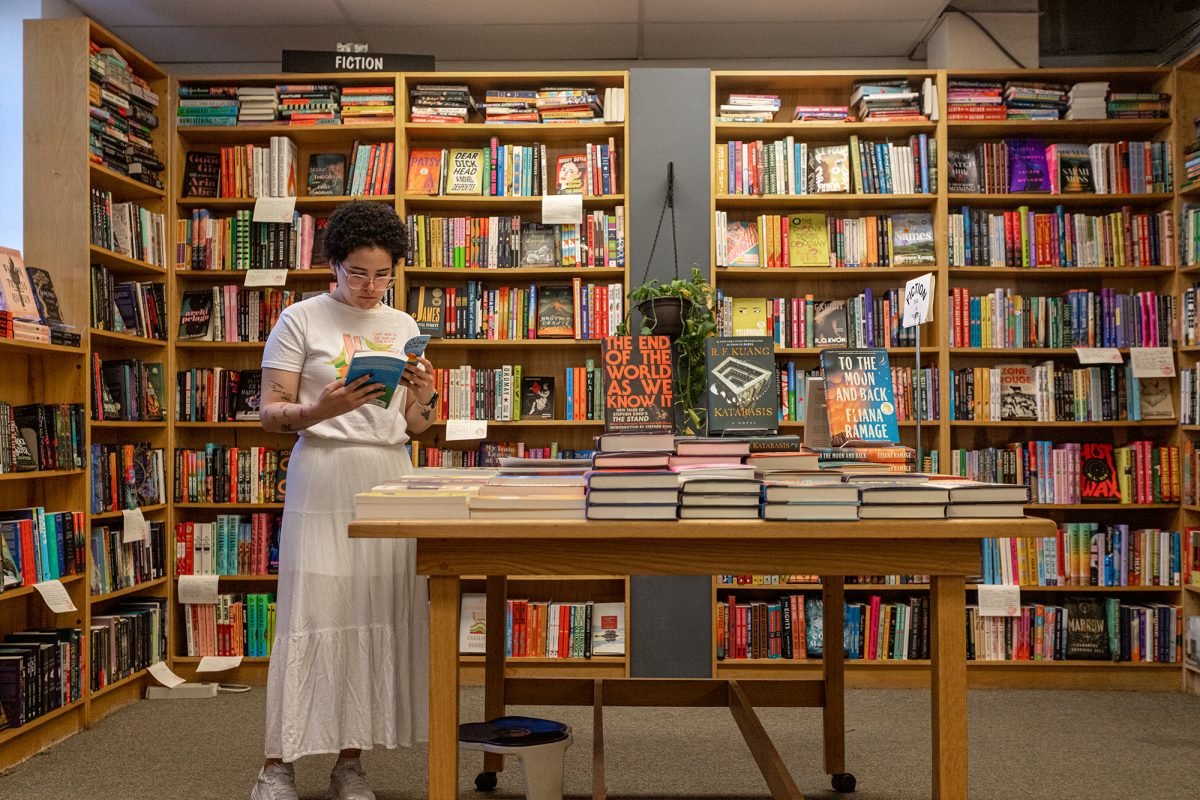Lauren DeCicca ’11 is a photojournalist based in Burma. Since she graduated from the college, she has taken photos for The New York Times, TIME, National Public Radio, Al Jazeera and many other news outlets. While at the college, DeCicca was the photography editor for The Ithacan and interned with New York Times photographer Ashley Gilbertson shortly after she graduated. After spending 13 months in Burma, she is back in the United States for the summer. She will return to Burma in October.
DeCicca sat down with Life & Culture Editor Evin Billington to talk about her photography, working in a foreign country and overcoming cultural and language barriers.
Evin Billington: What do you look for when you’re taking a picture?
Lauren DeCicca: Going into a situation where I know I have a bit of time to take a photo, I usually walk around, try to maybe introduce myself to people — sort of make my presence known. I know a lot of photographers try to hide, and I don’t think that that method is, I don’t know, I don’t think the subjects open up as much. I think you’re not necessarily putting your camera into someone’s face but just making yourself known. You’re a presence that’s going to be there, and then people can go about their daily lives. Usually I look for light, and moments and the one person that might not react to the camera. I get a sense that someone won’t mind a camera in their face, and I can go up to them, spend a bit of time with them, and then I can move on to other people once they see that I’m working.
EB: Do you ever worry that people are going to act differently because you’re there with the camera?
LD: Yeah, all the time. I mostly work in places where there’s a language barrier. I don’t speak Burmese. It’s a very difficult language to learn. I worry in some situations that people will act differently in front of the camera, but again, I think if you start to get a sense of when someone’s acting differently, and if they are, then you don’t take pictures, and when they start to go about their daily activities you start taking pictures, and then people really do forget that you’re there — even if you’re like an American girl in a rice paddy field.
EB: How difficult is it to overcome these cultural and language barriers?
LD: I would say the hardest thing about working in a non–English-speaking country is setting up shoots or making plans to go places, because people will try to rip you off or not let you go somewhere because they don’t trust you or don’t know what to do exactly. I always work with a translator, and I have a few really good friends who always know exactly what I want to do. They work in documentary films themselves, and we always go places. He explains who I am, I try to speak a little bit of the local language. As far as interacting with people who don’t speak the same language as me, I’ve never had a problem with it. It’s just kind of — smiles and laughs go a long way, they really do, even, like, shaking someone’s hand and knowing how to say hello. Most people are very, very welcoming.
EB: Do you ever feel that at first people look at you differently because you’re obviously a foreigner?
LD: First of all, I always dress with local customs in mind. Not necessarily in traditional clothing, but I always wear long pants, flip flops and a long sleeve shirt, just because women dress modestly there, so I do too. In Burma, or Myanmar — the people there don’t really have a preference as to what to call it, so I go back and forth — but in Burma, most people are excited to see foreigners, so usually when I show up somewhere, they run over and want to, like, shake my hand or hug me or get their picture taken with me. It’s really sweet and funny. After all of that is said and done, we get down to business. It’s a lot of fun most of the time. I feel like I’m shooting maybe 20 percent of the time and then just hanging out and getting to know people like 80 percent of the time.
EB: Do you ever feel intrusive?
LD: Yes. It’s easier to walk into people’s homes when you feel like you have a purpose, so if I’m on assignment, I always find it very easy to go into people’s homes, get right up in their face, go into hospitals, like, sensitive family moments when I’m on assignment. I know I have a purpose and I know it will go out there; it’s not just going to sit on my hard drive. With most things I do, I try to work with a clear intention and make people know that I’m not just there to take pictures, but I that I do sympathize or empathize with their situation, and really, just like, I’m there to try and help or there to try and understand. So I don’t usually feel intrusive, but there are some situations. I was just in Guatemala, and I was working at a home for abandoned elderly people, and I got — there were a lot of barriers and people weren’t letting me into bedrooms — and then I saw this photo, I just saw it through a door, and I just ran in there, and I got pulled out and thrown out of the place for the rest of the time I was in Guatemala. Like, they locked the gates and wouldn’t let me back in, but that’s the best picture I got in Guatemala, so I guess sometimes you just have to go with your instincts.
EB: Your photos are really very personal. Is it ever difficult to get someone to agree to being photographed in that way?
LD: Not really. I’m a bit goofy, but I’m a bit serious at the same time, and I think I come across as very genuine, and people can pick up on that. I think that’s easier — I think it’s easier when you can’t speak a language because you really have to go off of body language and smiles and just how you act around people. But most people, even if they’re nervous, they warm up to me quite quickly. I think that’s one lesson I learned working at The Ithacan: having to get close to students here very quickly because I used to have to shoot several assignments a day, which was stressful. And then in New York, watching my boss be very charismatic, like, know what questions to ask to make people feel comfortable right away. I also share a lot about myself when I’m shooting. I talk about my family, I share pictures with my family — I open up as much as I can so that they feel comfortable opening up to me.
EB: You’ve taken thousands of photos over the years, is there any one that has particularly resonated with you?
LD: Yes. Yeah. There was one moment, it was my first month — no, it was September of 2013 — and I had been working in an HIV shelter outside of downtown Yangon for a few months, and I had kind of given up on it because I wasn’t getting the pictures that I wanted, and my photography wasn’t growing the way that I wanted it to, and my friend was working on a story, and we were pitching it around and I had these OK pictures that I shot in June, that I was like, “Oh, this story probably won’t get picked up.” But then Al Jazeera wanted it, and I was like, “Oh no, I need to go back, I can’t sell them this work that I did, I know I can do better.” So I went back, I pulled myself back, and this place was, like, haunting me because I couldn’t make any good photos, so I went back three months later and forced myself to be there. It was awkward; I put a manually focused 50 [mm lens] on my camera and forced myself to shoot with that, so I had to get close with people and spend time right next to them. I was playing with a cat at the [HIV shelter] and a man next to me collapsed, and that was the first moment that I felt like I was photographing something and people understood why I was there and what I was doing. They just opened up to me rather than pushing me out, like, I feel like they should have or easily could have; they opened up and I was allowed to be right next to this man who had just collapsed and they were trying to care for and trying to get a taxi so they could bring him to the hospital. At one point I stopped and just looked around, and everyone was watching the moment and no one was watching me. It was like I had just disappeared, and that was the first time that I actually felt like I had a right to take photos, and since then it’s been going pretty steadily. The photo isn’t the best photo I’ve ever taken, but that moment was the first time that I think I understood what I was doing.
EB: What advice would you give to aspiring photographers who aren’t sure exactly what they want to do?
LD: Don’t think about it too much. If you feel like you want to do something, do it. Make it happen. I’m not making money. I don’t make much money, but I’m doing something that I love, and I was working in New York and there was just a day where I was talking to my boss, who is a photographer at Seven Photo and my mentor and I worked with him for about a year in New York, and I was just like, “I don’t want to photograph in New York.” He was like, “You shouldn’t,” and he said go to Burma, and then, like, five months later, I bought a ticket and I just went and stayed. I tried not to overthink it. I wanted to be a foreign correspondent, and I knew that if I don’t try I’ll never know.
EB: Did you know much about Burma before you left?
LD: Nothing. I knew that I wanted to do social and humanitarian work and that going to the Middle East was a bad idea, but Burma’s hot right now, and there are a lot of stories. I’m one of three Western photographers there, and all of us are about the same age, so it’s a small community. I’ve been to places in Burma that no one else has been to. I photograph things that have never been photographed before, and it’s really cool, and I think it’s one of the only places where those opportunities are left. I didn’t want to go to a place that had hundreds or thousands of photographers working. I knew I couldn’t compete and I knew I wouldn’t be able to learn on my own, and I think that’s another lesson that I’ve learned in the last year. You can spend a lot of time looking at other people’s work, but you can’t force yourself to be them. You have to do what comes naturally to you and go with that, even if it takes a bit longer, because otherwise you’ll just fail at becoming someone else instead of putting work into becoming better at being yourself.














